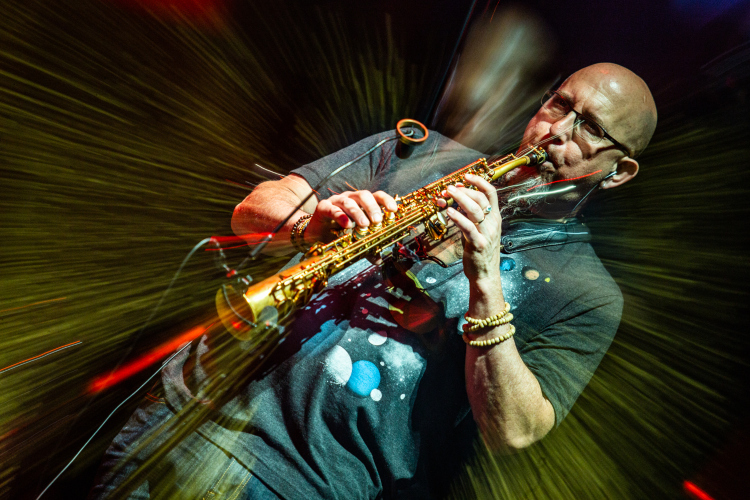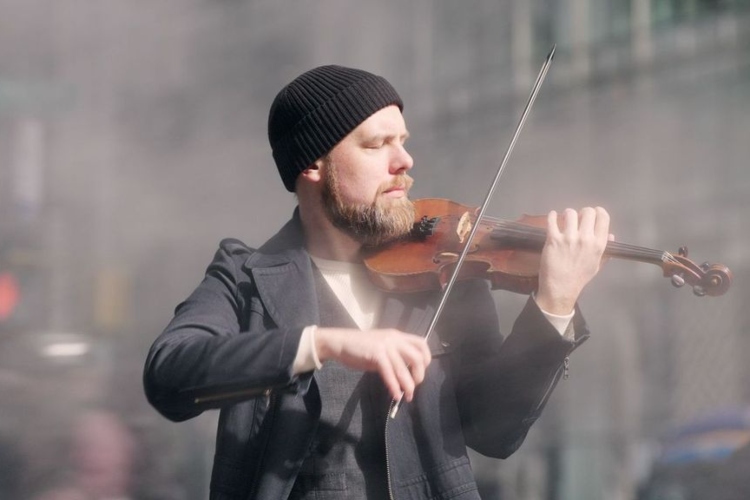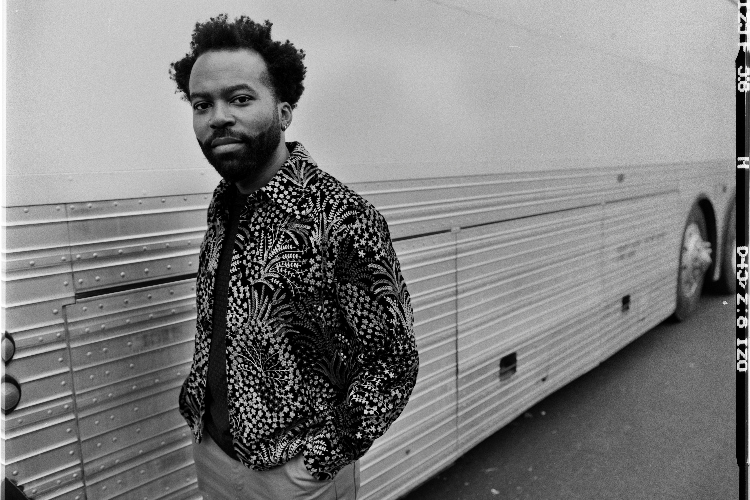Sound is Everywhere: A Conversation with Jeff Coffin (Part Two)
|
Getting your Trinity Audio player ready...
|
In the second part of our conversation with Jeff Coffin (check out part one here) we dig deeper into the saxophonist’s album, Between Dreaming and Joy (Ear Up, 2022), including his use of an ice cream truck jingle, a bungee chord chair, and more. We also get into a theoretical discussion on the concept of music as well as three of its masters: Charles Lloyd, Hermeto Pascoal, and Ornette Coleman
PostGenre: Titles of tracks on Between Dreaming and Joy reference crows, whales, and birds. Is there something about wildlife that spurs you creatively?
Jeff Coffin: Yeah, I am fascinated by the sounds of nature. Especially bird calls. Here in Nashville, we have mockingbirds and they learn such a wide variety of calls. And then when you go somewhere like South America, there is a whole new set of birds with their own calls. Each bird species has its unique voice.
But I am also fascinated by the sound of the wind. I have wind chimes all around our house. The chimes give such a natural sound that you can’t fully replicate. There is something about wind currents and their random bursts that make them so beautiful.
When I write music, my choices are certainly informed by my listening to nature. Birds, bullfrogs, and crickets are all in different spaces of sound. There’s a transparency to nature that allows it to not only exist but flourish. And animals often have to leave a big city because their frequencies are taken up by the noises around them. Many frequencies interfere with one another musically, and you end up with noise pollution.
PG: On possibly the opposite end of the spectrum, what was the inspiration behind capturing the sound of an ice cream truck jingle on the title track? It seems pretty removed from nature.
JC: Well, if you listen carefully, you may be able to hear that it was raining outside. I was about to do some recording, but the windows of my studio were open, and it was a really nice day. I heard the ice cream truck driving around the neighborhood and thought it would be an interesting, unusual, and unexpected thing to add to the record. So, I stuck a microphone in the studio window and recorded it. I love the randomness of it. I also greatly appreciate field recordings. In this case, it was not a very pristine sound. Because the truck was pretty far off in the distance, I needed to crank the microphone. But this also brought a lot more noise into the recording. Ultimately, I felt like adding the ice cream truck was sharing a part of my environment. It was sharing an intimate moment from where I exist every day. Much of the music on this recording was made within a five-foot radius of where I sit for eight to 10 hours a day when I’m home. When my windows are open, you know, I hear birds, the ice cream truck, helicopters, and planes, and I wanted to share that space with the listener.
PG: What about the bungee chair bass on “When Birds Sing”? It does not seem like something you would naturally hear in your environment.
JC: Right? The story behind that is that I was looking for a new chair for my studio. I went to The Container Store to look for things that would help me stay organized. At the store, I saw bungee cord chairs. I had never seen them before. I sat on one and thought it was pretty comfortable, so I bought it for my studio. But, being fairly curious, I noticed that the bungees make a little sound when you pluck them. I started to wonder if I could make some music out of its sound. So, I recorded it to a lick and then looped it. Then I put a clarinet melody over it. But I wanted a bit more presence on the track. So I asked my friend, Alana Rocklin, who plays bass with the band Sound Tribe Sector 9, to add to it. Alana is an amazing upright and electric player. She is also an incredible improviser.
And then Michael League, who most people probably know as the leader/bassist of Snarky Puppy, was also added to the track. I previously worked with Michael in Peru on Susana Baca’s Palabras Urgente (Real World, 2021). At the time, Michael was also doing some work with Moroccan frame drums. When I got this track together, I asked him if he wanted to do frame drums on it, and he agreed to perform for it. But I also wanted some Middle Eastern vocals. I had tried myself at it, which you can hear at the very beginning of the track, but when Michael saw the vocal line, he knew exactly who should sing it. He recommended Sarah Ariche. Michael said that Sarah was amazing. At the time, I was not thinking of a female voice for the track. But I reached out to her, and she sent me the most amazing tracks. Sarah also plays the African ngoni on the track. So, there is a lot of percussion in that tune but it is delicately balanced with the clarinet. What Sarah added vocally is astonishing. But that whole track started with just a routine trip to The Container Store.
PG: Something about using a chair to make music – especially since you are tuned into the avant-garde – seemed reminiscent of John Cage, in the sense that it raises questions of what constitutes music or sound.
JC: Certainly. What is sound? Where does it come from? What actually is it? Even Hermeto Pascoal, who is a big influence on me, believes that sound is everything. Sound is everywhere, and everything makes a sound. The only significant difference between those sounds and music is whether you want to use the sounds to create something. On one of the tracks on Between Dreaming and Joy, “Bird and Magic,” I borrowed an idea from Hermeto and filled up coke bottles with different amounts of water to produce a particular chord as part of the harmony. I do have an interest in the avant-garde in the sense of how it has been formed. I find ways to integrate it into my music but only in a way that serves the music.
On my desk, in front of me, I have a beautiful bell I obtained recently. It’s the size of a silver dollar in width, maybe a little larger. I also have singing bowls and a whole corner of global percussion instruments that I’ve collected over the years. I’m always curious about what will make great music.
PG: On the topic of instruments from different cultures, on “Ruthie” you play the Hungarian tárogató. How did you start playing the instrument?
JC: It was Charles Lloyd, actually. Mine was made by a guy named József Tóth, who is the premier tárogató maker in the world, and I bought it from Charles. József made a few tárogatós for Charles. I was talking to Charles’ wife, Dorothy [Darr] because I was thinking about buying one from József and knew he had made some for Charles. Dorothy told me that Charles had three of József’s tárogatós and that she had been on him for a while to sell one of them, but he had never done anything about it. Charles offered to sell it to me if I was interested. Of course, I jumped at the opportunity. It is a lovely, amazing instrument. It sounds like a cross between an English horn, a clarinet, and a soprano [sax]. There’s also a tune on the next Dave Matthews Band record called “Madman’s Eyes” where I play the tárogató, and I am very excited about it.
PG: Do you feel a particular connection to Lloyd, given you both have a background in jazz but brought those ideas to a more popular sphere – Charles with The Beach Boys and you with the Dave Matthews Band?
JC: I do. I’ve gotten to know Charles and Dorothy over the last few years. Charles is 84 now and still out there playing at the highest level. I relate to him on many different levels.
I didn’t fully discover his music until seventeen or eighteen years ago. I just wasn’t ready for it until then. Charles has a deep spirit, and his music was just over my head. But when I got his music, I got it hard. It helped me pretty deeply. We had Charles sit in with us a few years ago with Dave, and it was extraordinary.
Charles also has so many stories. He did the Chitlin Circuit in Memphis with Howlin’ Wolf back in the day and has played with so many other people. It is inspiring that he played the flute at some of [Allen] Ginsberg’s poetry readings. Then there is his work with The Beach Boys and Cannonball [Adderley]. And, of course, his quartet with Keith Jarrett, Jack DeJohnette, and Cecil McBee not only made the first jazz album to sell one million copies [Forest Flower (Atlantic, 1967)], but they even opened for Janis Joplin.
Charles has always been an explorer, both musically and spiritually. I feel like I can relate to him in that particular way. I’ve had some very beautiful conversations with him. He’s an amazing guy, and I respect him tremendously. Charles has an incredible power to expand people’s consciousness through music but still be a very humble guy. He told me he once thought he could change the world with music but realized he was wrong. I told him that he did change the world with his music. Maybe not to the extent he thought he would, but his influence on musicians and even people who are not musicians is so profound.
PG: This is a little out of left field, but you wrote a children’s book, The Rabbit, The Carrott, the Crow, & the Quarry (self-published, 2020). Do you think the creativity needed to write the book comes from the same place as the creativity you use to write music?
JC: Actually, that book is just the first I’ve published so far. I have four others that the illustrator, Augie Haas, and I are working on. They’re already written but we are finishing up Augie’s illustrations. Augie also comes from the jazz community; he is a wonderful trumpet player in New York who plays with the Maria Schneider Orchestra, among other things.
I do feel like both my ideas for writing a book and for writing music comes from the same place. I had the opportunity years ago to hang out with Ornette Coleman a few times. One of the things Ornette said to me was that he thought ideas resided in the same place as prayers. I thought that was such a beautiful way of thinking about creativity; that there is a sort of holiness to ideas. I think about creativity a lot. Sometimes when I write something, I don’t know where it is coming from, I honestly don’t.
Years ago, when I was in college, I played with a group called the Dallas Jazz Orchestra. We had the opportunity to play at [the] Montreux [Jazz Festival]. We also did a couple of gigs with Van Morrison. I had just gotten into writing music at the time and thought that working with Van Morrison was a great opportunity to learn more about composing. Being a little naive at the time, I went up to Van Morrison and asked him what his compositional process is like and how the music comes to him.
PG: And his response?
JC: I’ll never forget it. He pointed and looked up, and told me that the ideas just come through him. He said he was just a conduit that the ideas poured through. It took me a long time to understand what he meant. But now I understand. Sometimes when I write, ideas come to me quickly, while others don’t seem to come to me at all; the muse is just not in the room. I don’t know how I put together ideas for music, it just happens. The same thing happens when I am drawing. I did the cover to Between Dreaming and Joy among others. I feel like the creative spirit – whether it manifests as literary writing, musical writing, or drawing, is all the same.
Though I will say that inspiration, for me, seems to come in moments of silence. I’ve only ever written one tune while on the road since I’ve been with [Dave] Matthews. With the Flecktones, we used to write together and compose music from sound checks and the collaborative process. But now I need silence, so come up to my studio – above my garage- to compose. It’s very quiet up here and I can get that solitude I need to guide me to write.
Not to sound overly dramatic, but I feel like I am experiencing holy moments when I write. I am not a religious person so I don’t mean it in that sense. But the little moments when I compose feel very special and different from other moments in my life. There is something about the moments of creation, where you’re discovering something and pulling it and inviting it in.
PG: As far as those moments being special, Wadada Leo Smith has suggested that people do not make music; it comes from something higher, and the artist is just delivering it.
JC: Yeah, I think that idea of the artist being a conduit for the music goes back to the purity of intention. I think people see right through music that is not true to them.
I mean, I think that’s why someone like Kenny G has been so popular; he stands by his music. I don’t particularly like it, but he doesn’t care. And that reminds me of another Ornette quote that I love: “all listeners are equal in their opinions.” That is one of the greatest things I have ever heard.
PG: A minute ago, you said that when touring with the Dave Matthews Band, you do not compose much because you don’t have the silence you need. Do you feel that your time with the Band has made you a stronger performer, even if it has not made you a stronger composer?
JC: Actually, I think my time with the Band has made me a better composer, as well. I’ve learned a lot about composition and phrasing from working with a singer night in and night out. I love Dave’s melodies. He’s a very melodic writer. And his bridges are quite extraordinary and very unusual. He is also very polyrhythmic in his use of rhythms. I’ve learned a lot from those elements.
I’ve also learned that virtuosity manifests itself in many different ways. Many people think of virtuosity as a technical thing, such as playing really clean tones. Dave is a virtuosic songwriter and guitarist in the sense that he’s playing things that take a certain profound proficiency. I’ve come to understand that there is virtuosity in using the various parts of the band to further your music. I’ve learned a tremendous amount from being in the Band.
Also, you spend so much energy on the road. You have to keep your energy at such a high level for performances but also want to go out and experience the city you are in. Those experiences of visiting the world end up informing my compositions. That’s true whether I am visiting old friends or am in a city I’ve never seen before. Actually, that is one of the things I have always tried to get my students to better understand. Yes, you must have technical proficiency and prowess. But if you haven’t experienced life, what message are you conveying with your music? If you spent your whole life in a practice room, that would be your musical story. And that is not an exciting story. Instead, to be a better artist, you must live life. All the great artists not only made music but lived a life that informed their music. That’s certainly true of Miles [Davis], Louis Armstrong, or any other great storyteller. Yes, they put a lot of time into their instruments, but they also lived.
Between Dreaming and Joy is now available on Ear Up Records. It can be purchased on Bandcamp.
More Information on Jeff Coffin can be found on his website.
Photo credit: Rodrigo Simas




One thought on “Sound is Everywhere: A Conversation with Jeff Coffin (Part Two)”